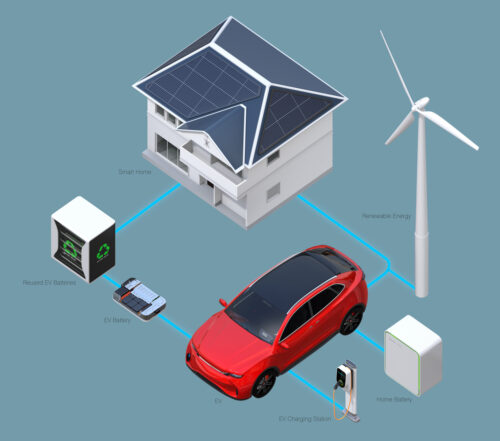Power plants on wheels
Balancing the grid with electric vehicles
Last updated:
The roll-out of Vehicle to Grid technology in electric vehicles could play a major role in balancing the national grid as the UK makes the transition to renewable electricity generation.
Making use of the batteries available in the UK’s growing fleet of electric vehicles could be a much cheaper means to balance the grid, resulting in cheaper electricity bills for all UK consumers. Considerable savings could also be made by the owners of V2G capable EVs, with the driver of even a small Nissan Leaf earning up to £850 a year by selling electricity back to the grid at times of peak demand next year.
The extent to which these savings are realised will be determined by the speed at which V2G-capable electric vehicles are introduced on the UK’s roads. The government is expected to announce details of its Zero Emission Vehicle (ZEV) Mandate imminently - a policy that will require car manufacturers to ensure an increasing proportion of the cars they sell in the coming years are electric.
If the mandate follows the car industry’s ‘high’ deployment scenario and encourages ‘vehicle-to-grid’ (V2G) technology, 13.5 million V2G capable electric vehicles could be available to sell electricity to the grid at times of peak demand by 2035, and owners would have earned a total of £7.6bn by that time.
However, should the Government proceed with its current proposed targets and the rollout of V2G technology happens slowly, as few as 2.3 million V2G capable EVs could be available by 2035, and owners would have earned just £1.1bn by 2035.
With thanks to Claire Miller and Octopus EV for their input
